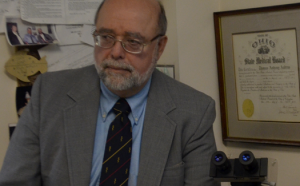Dr Andrew explains that a forensic pathologist is best trained to offer an expert opinion on the ACTUAL cause of death.
At first glance, “cause of death” seems to be a simple and straight-forward issue. Often it is, but on those cases where cause of death is in dispute, it is important to know that no medical sub-specialist is more extensively trained, experienced and knowledgeable about this question than a veteran forensic pathologist. 
Many studies over decades have shown that death certificates filed by clinical physicians have a relatively high error rate. This does not reflect bad practice as much as it does a lack of understanding of what constitutes a legitimate cause of death.
Cause of death has a formal definition: The disease or injury, or combination thereof that initiates a lethal train of events and without which death would not have occurred.
Consider the following examples:
A cab driver is shot in the neck during a robbery. He survives the shooting but is left quadriplegic. Fourteen years later he dies in a long-term care facility from sepsis stemming from a urinary tract infection as a result of a neurogenic bladder, a consequence of his paralysis. The medical director of the facility certifies the cause of death as “urosepsis.” This is partially correct but represents the immediate cause of death. The initiator of this lethal train of events and therefore the underlying cause of death is the gunshot wound of the neck. The difference in certification has profound legal consequences. Urosepsis is natural. The gunshot wound Is homicide.
A daycare provider carelessly leaves a bottle of acetaminophen within reach of a curious toddler she is caring for. The child ingests a toxic dose and goes into liver failure. She requires a liver transplant and after a long battle with graft versus host disease, dies in the intensive care unit, never having left the hospital. The hospitalist certifies death as due to graft versus host disease. The initiator, to which a straight line of causation can be drawn is acetaminophen toxicity.
In a civil case against an irresponsible prescriber of opiates, the defense expert internist testifies death was due to heart disease, citing obesity and an enlarged heart seen at autopsy. Toxicology shows trace levels of clonazepam, and oxycodone at a “’mid-therapeutic” concentration. A clinical toxicologist for the defense testifies the levels detected “never killed anyone.” The forensic pathologist, evaluating the entire case (history, scene and circumstances of death, autopsy findings and toxicology), each element in its proper context, can testify that death was due to acute oxycodone intoxication and explain to a jury why the opposing experts are not taking a holistic approach to ferreting out the underlying cause of death.

